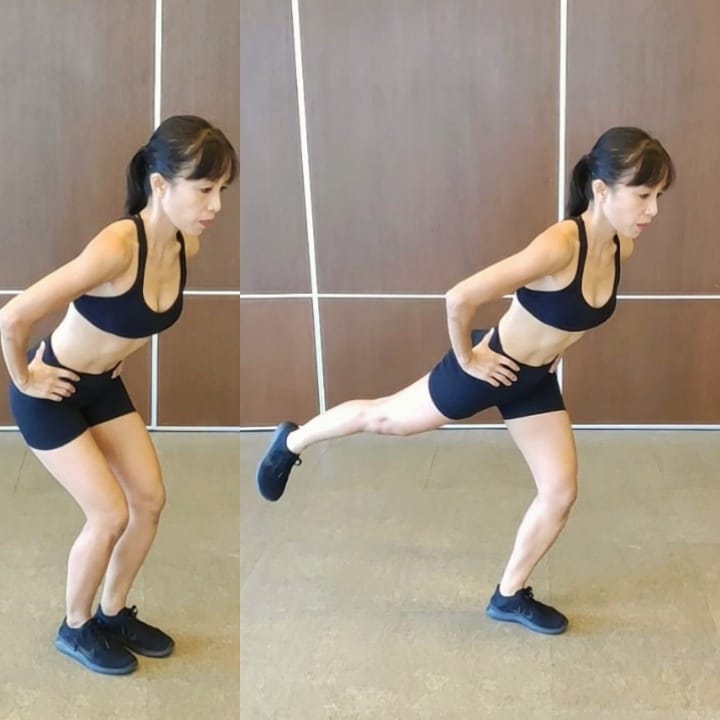It’s mid-year! You must be resetting your exercise goals and excited to resume your workouts. However, you might be clueless or confused about which exercises to do especially if you are just a beginner or stopped exercising for a long time. For this week, I created an exercise routine for everyone that includes the most effective exercises based on studies and experience that can increase your-over-all strength, burn calories, increase your metabolism, tone your body, improve posture, and help prevent injuries.
These are the strength exercises that I always include in my personal workouts and give to my clients, regardless of age, fitness level, and goals. The intensity of the exercises will just vary depending on the position of the body (there are a lot of modifications for each of the exercises), amount of resistance (from body weight to using heavy dumbbells), and type of exercise props (dumbbells, barbells, medicine ball or resistance band) that will be used.
You can do this workout routine at home, at the gym, at your desk, or while on a vacation.
Consult your doctor before engaging in any form of physical activity If you have health issues and existing injuries to ensure safety.
Start with a 3-5 minute warm-up to gradually increase your heart rate. March in place, walk, or dance. You can complete the 8 strength exercises in 10 to 15 minutes. If you need to increase the duration, do 2-3 sets of each of the exercises. At the end of the routine, cool down by doing flexibility exercises for another 3 to 5 minutes.
Squat (10 to 20 reps or 30 to 60 seconds)
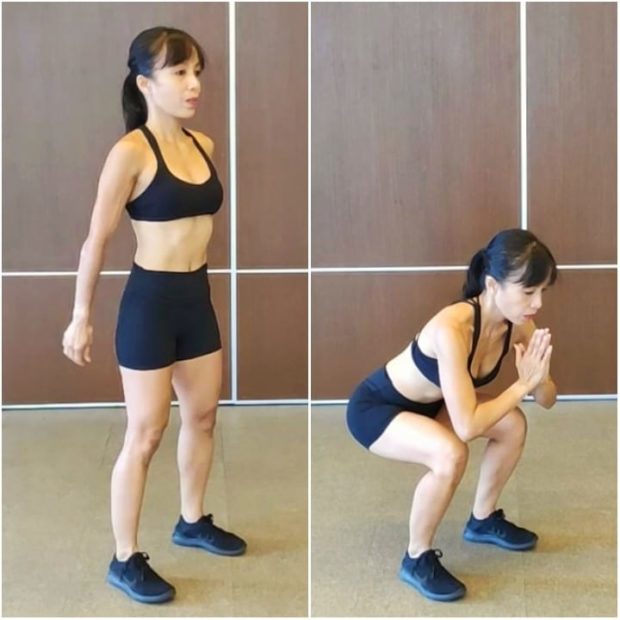
The squat is one of the best functional exercises that you can do, making you more efficient and doing activities of daily living safely such as picking up things from the floor and climbing up and down the stairs. It targets the thighs, calves, buttocks, and core.
- Position your feet shoulder-width apart. Bend the knees and the hips like you’re sitting down on a chair until the thighs are parallel with the ground or only slow as you comfortably can. focus on squeezing your buttocks as you come up to start position.
- To modify, hold the top of the backrest of the chair for support or do a sit-to-stand chair exercise.
- To progress, grab a pair of dumbbells for added resistance. You can also do biceps curl or shoulder press while you squat. For cardio add jumps.
Hip extension (10 to 15 repetitions or 30 to 60 seconds on each side)
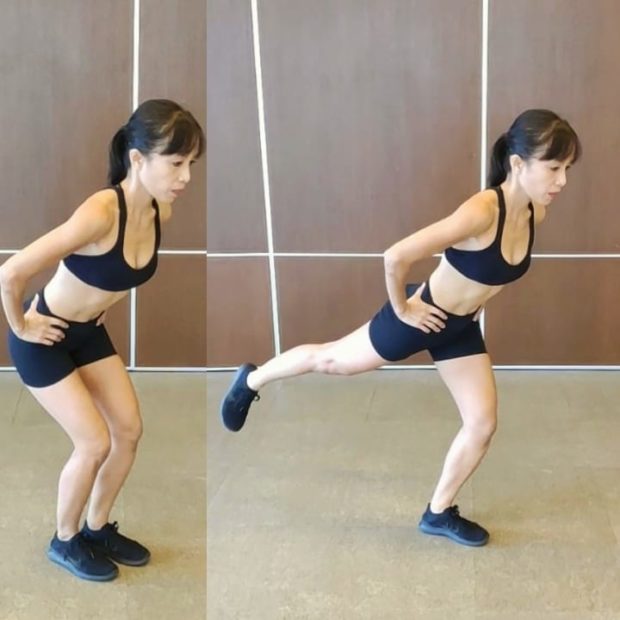
Hip extension exercise targets your core, buttocks, back thighs, and even the larger muscles of the inner thighs. If you are sitting all day, the muscles in front of your hips usually get tight, in effect, and it weakens the back of your thighs and buttocks. This will affect your posture and overall mobility when walking, climbing up and down the stairs, and playing your sports.
- Start by slightly bending at the hips, keeping your spine in a neutral position with your feet shoulder-width apart. Lift one leg back while keeping your torso stable. Gradually lower down the leg, then switch sides. You can also start from an upright position and then lower the torso as you bring the leg up.
- To modify, hold the chair for more support or kneel on a mat with hands directly below the shoulders and knees directly below the hips while you execute the move.
- To progress, use dumbbells and bring your arms out to the side, squeezing your upper back while you lift the leg. You can also balance on one leg and finish the repetitions on one side before you switch.
Reverse lunge (10 to 15 repetitions on or 30 to 60 seconds on each side)
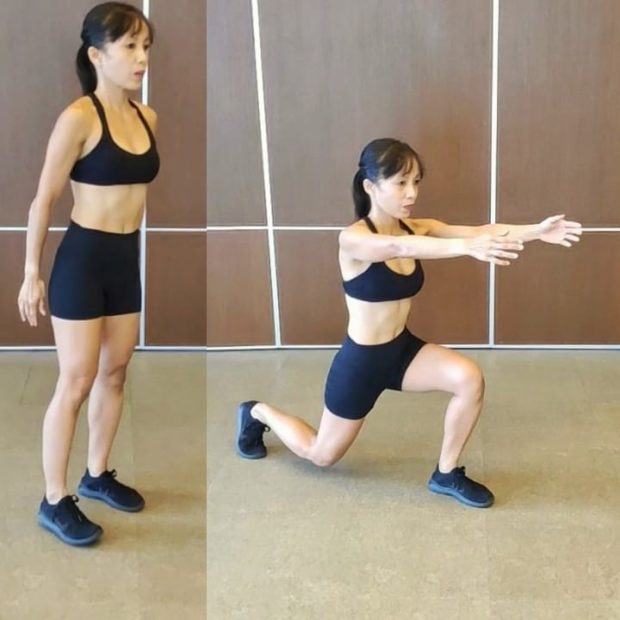
Just like the squat, the lunge is an important functional exercise that targets your lower body, but this exercise activates more of your core muscles because it requires coordination and balance. There are many variations of a lunge exercise, but reverse lunge is safer for beginners and older people because it has less impact on the knee and is easier to perform than a forward or side lunge.
- From an upright position, raise both arms forward up to shoulder height, bring one leg back, then bend both knees creating a 90-degree angle on your knees with your back heel lifted. Then push back to starting position and repeat with the other leg.
- To modify, decrease the range and/or hold a chair to increase spinal support and to lessen the pressure on your knees.
- To progress, grab a pair of dumbbells for added resistance. You can also complete the reps on one leg first before you switch sides. You can challenge your balance while adding rotation by twisting the torso towards the lifted knee after stepping backward.
Standing side leg lift (10 to 15 repetitions on or 30 to 60 seconds on each side)

The side leg lift is an important exercise for the core, buttocks, and outer thighs. You need to move your body laterally or sideways to prevent injuries and strengthen your muscles for activities or sports requiring you to move in all directions.
- From a standing position, while balancing on one leg, slightly lift the leg in front then bring the leg out to the side with your knee and toes facing forward. You can bring your arms to the side at the same time to work on your side shoulders.
- To modify, hold a chair for extra support or lie down on your side using a mat and lift and lower the leg while flexing the foot.
- To progress, use a booty band or ankle weights for extra resistance. You can also combine upper body moves such as side raises with dumbbells or pulling a band apart from the front as you lift the leg to the side while standing.
Plank (hold the position for 15 to 60 seconds)
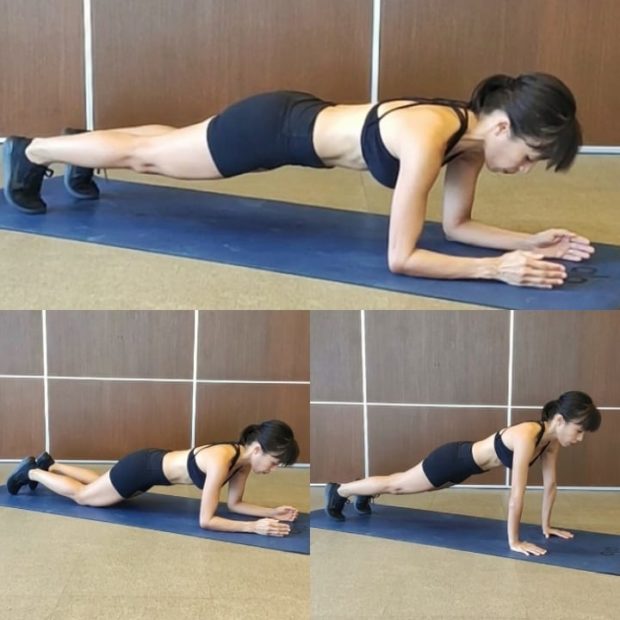
The plank is an important exercise for your abs, back, obliques (waist), chest, shoulders, arms, buttocks, quadriceps (front thighs), and calves. It can improve your posture, avoid injuries and get stronger in others exercises such as push-ups and mountain climbers.
- Face down with your forearms and toes on the floor, elbows directly below the shoulders. Gently squeeze your abs and buttocks so you can last longer without hurting your back while keeping a straight line from the shoulders to the heels.
- To modify, bring your knees down while on your forearms. To lessen the load, you can position your forearms on top of an elevated surface such as a chair or bed.
- Progress by planking on hands and toes, by increasing the duration to more than one minute, by adding extra moves like arm raises or leg lifts, or by changing your position by progressing to a side plank.
Seated torso flexion (10 to 20 repetitions)
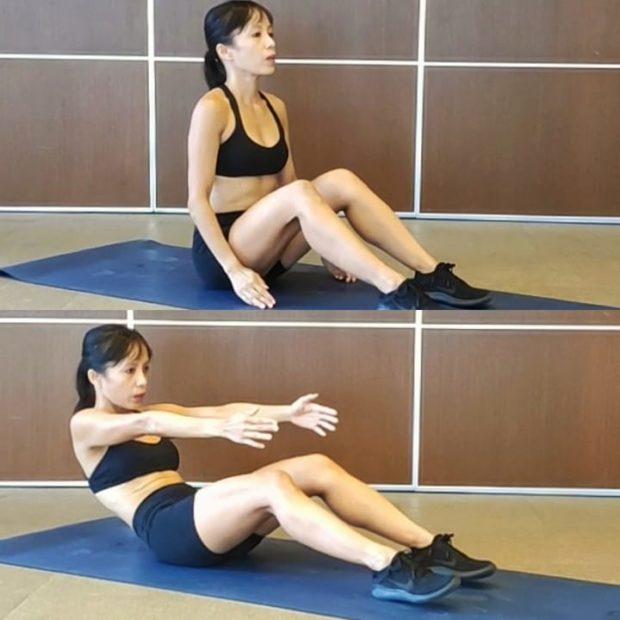
There are various flexion exercises that you can do primarily target your abs such as crunches, and sit-ups. I like the seated torso flexion exercise because the movement is not too strenuous for the back and this can be done even when you’re just sitting in a chair.
- Sit on a mat with your feet hip-width apart and arms raised in front. Slowly scoop your abs as you curve the lower back and roll the hips back, moving the torso back only as far as you can connect the feet to the ground. Return to your straight-back position.
- To modify, decrease the exercise’s range of motion or sit near the edge of a chair with feet flat on the ground then execute the move.
- Progress by increasing the range of motion or adding a pair of dumbbells. You can also add rotation to target also the obliques or waist by twisting to one side as you roll your hips back.
Push-up (10 to 20 repetitions)
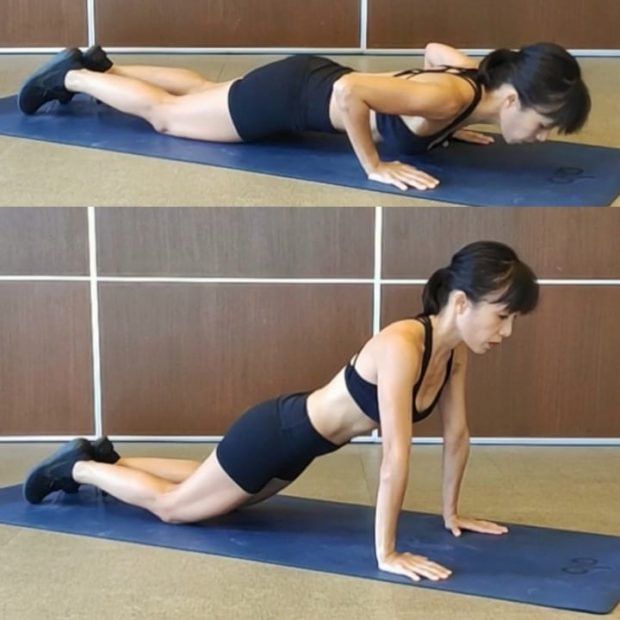
Push-ups strengthen the muscles used for planks, particularly the chest, shoulders, and triceps (back arms). It is simple, but can be challenging and can be done anywhere because you just use your body weight as resistance.
- Face down while on knees with hands placed wider than shoulder-width (a kneeling plank position), maintaining a straight line from the shoulders to your knees. Bend your elbows as you move your torso down while keeping your shoulders away from the ears. Return to starting position by extending your elbows.
- To modify, go to a quadruped position (hands directly below the shoulders and knee directly below the hips) and bend your elbows as you bring your torso down without moving the lower body. You can also standard your push-ups with your hands on top of a bench or a bed.
- To progress, position yourself to a standard plank with knees off the ground. You can also bring your hands closer together and point the elbows back while your do move.
Bridge (10 to 20 repetitions)
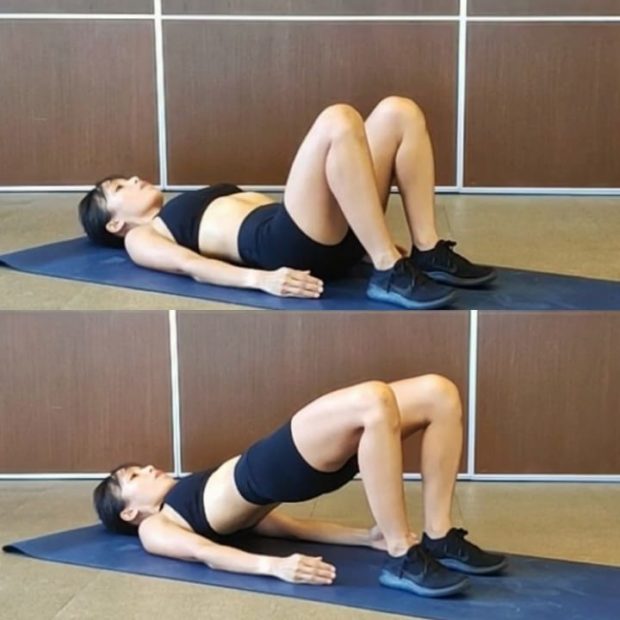
The bridge is an important exercise for the buttocks and back thighs. This exercise improves the posture and can help relieve lower back pain.
- Lie down on your back on the mat with arms down by your sides, legs bent at a 90-degree angle, and feet flat on the floor. Lift the hips up by squeezing the buttocks and putting the weight more on your heels until you create a straight line from the shoulders to the knees. Avoid arching the spine by gently squeezing the abs as you execute the move. Slowly return to starting position.
- To modify, lessen the range of motion or lift the buttocks only as far as you can comfortably can.
- To progress, put your feet on an elevated surface such as a chair, bench, or bed to increase the range. You can also lift one leg up as you lift the buttocks, return to starting position, then switch sides.
Check this link to watch the videos of all the exercises:
Email the author at [email protected] or follow/message her on Instagram @mitchfelipemendoza

